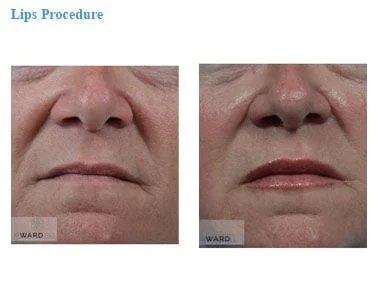Utah’s Leading Lip Implant SURGEONS
Do you struggle with thin, undefined lips that detract from your facial proportions and overall appearance? Lip implants offer a safe, effective, and long-lasting solution to enhance your lips and give you the full, luscious pout you've always wanted. Our skilled surgeons use state-of-the-art techniques and advanced technology to customize your lip implant procedure to meet your unique needs and goals, resulting in a more youthful and attractive facial appearance. With a range of implant sizes available, we can help you achieve your ideal lip shape and size, all while maintaining a natural-looking result. Plus, with minimal downtime and a comfortable, personalized experience, lip implant surgery is a popular choice for those seeking to enhance their facial features and boost their self-confidence. Don't let thin, lackluster lips hold you back any longer. Book your lip implant consultation today and start enjoying the benefits of a fuller, more beautiful smile!
What Are Lip Implants?
Lip implants are made of a soft silicone material that mimics the consistency and shape of the natural lip. When surgically placed inside the lips, they add permanent volume.
Silicone is considered one of the safest materials for any implant is because it is a generally inert substance. The human body does not typically react to or “reject” silicone. This makes it an appropriate option for long-term volume augmentation of soft tissues such as the lips.
At Ward Institute, we pride ourselves in natural and customized results. Just like no two people have the same fingerprint, no two people have the exact same lips. During your consult, we carefully measure your lip dimensions and discuss your aesthetic goals. Only then can we custom order an implant that will fit YOUR facial features.
Once healed from the procedure, most patients no longer feel the implants and enjoy permanently fuller, yet natural looking and feeling lips.

Am I a good Candidate for Lip Implants?
Good candidates for lip implants are individuals who have thin lips and desire a permanent solution for achieving fuller, more aesthetically pleasing lips. Patients should be in good overall health and have realistic expectations about the outcome of the procedure.
You are likely be a good candidate for lip implants if any of the following apply to you:
1) You naturally have small lips.
2) You want to feminize your facial appearance.
3) You simply prefer the aesthetic of a fuller and more luscious lip.
4) Your lips have become smaller over time. As we age, the fat and collagen that give younger lips that beautiful plump appearance decrease. Additionally, gravity causes the soft tissue to descend over time, literally rolling the upper lip inward. This makes the lips appear much smaller than they actually are.
5) You want to soften the appearance of "smoker's lines" (the little wrinkles all around the lips that appear when puckering and become more prominent with age).
6) You dislike the maintenance of lip filler (whether it be the physical discomfort of injections, the cost, or the time).
Before proceeding with lip implants, you should try lip filler at least once or twice to get an idea of what implants would look like on you. Once you have done this, know that you like the look, and are ready to commit to a more permanent lip augmentation, lip implants are a great option.
Lip Implant Procedure
The lip implant procedure is typically short and usually takes 30-60 minutes to complete. Lip implants can be placed under local anesthesia (awake, but numb) or general anesthesia (meaning you are asleep and will not remember any of the procedure). This decision depends on a variety of factors. General anesthesia inherently carries more risk than local and requires the presence of an anesthetist, which significantly increases cost. Most patients do just fine with local anesthesia only. However, for patients who struggle with severe anxiety or who are having other surgeries done at the same time (most commonly a rhinoplasty or face lift), general anesthesia may be the better option. You will have the opportunity to discuss all of your anesthesia options during your consultation.
It may seem scary to be awake during a surgical procedure on your face, but rest assured that we employ many techniques to make it a comfortable experience. Firstly, certain medications may be used to help you feel calmer (and potentially a bit sleepy) if you tend to get anxious during procedures. This is done on a case-by-case basis.
Secondly, the lips are completely numbed with injections of a local anesthetic. This starts with a "dental block”, or numbing injections in the mouth, similar to how a dentist would numb you for a dental procedure. Once that has taken effect (generally just a few minutes), we add extra numbing to the lips themselves. During this step, some patients may notice their heart racing slightly. The epinephrine in the numbing injections reduces the amount of bleeding and bruising you experience. However, epinephrine can also increase your heart rate for several minutes. This is perfectly normal and very temporary.
Numbing is probably the most uncomfortable part of the whole procedure. After numbing is achieved, you shouldn't feel anything painful. You will still feel some tugging, pulling, and pressure, but no pain.
Once you are completely numb, your lips and part of your lower face will be sterilized with an antiseptic solution.
The surgery is then begun by creating two tiny incisions on each oral commissure (the crease at the corner of the mouth where the upper and lower lip meet). These incisions are so small and heal so well that, once you have fully healed, you will likely forget they were ever there.
An instrument is then used to create a small tunnel under the skin of the lip to connect the two incisions. The sterile implant is then soaked in even more of the sterilizing solution (just for good measure) and inserted into the tunnel. Care is taken to center the implant well to give good lip symmetry. A small dissolvable stitch is then placed over each incision. You do not have to have these stitches removed later because they will dissolve and come out on their own within a week or so.
Recovery Process
Following the procedure, you will remain numb for a couple of hours. After this, you will likely feel some tenderness. Your prescribed medications and ice are typically sufficient to control the discomfort. You can still go about your daily activities, but you should avoid increasing your heart rate too much while you are healing. The only real constraint is that you avoid opening your mouth excessively wide during the healing process (usually a week or so). The is simply to avoid disrupting the stitches that are holding the tissue together. While you can technically eat anything you like after the procedure, we don’t recommend quadruple decker burgers or mile-high sandwiches that would require big, tall bites. You may want to stick to smaller bite sized foods or even soft food that you don’t have to aggressively chew, like mashed potatoes or smoothies. This is only necessary until the incisions heal and the stitches fall out.
During your recovery, you will be prescribed antibiotics and anti-inflammatory medications. You will also be instructed on how to properly clean and care for your incisions. Medical staff will also see you in the office one week following your procedure to ensure that you are healing properly. Of course, we are always available for questions regarding your healing, even after regular office hours.
Bruising and swelling will increase over several days following your procedure. While they may appear severe initially, these symptoms improve slowly but significantly over the next few weeks. Although you may not feel ready for the whole world to see your lips during this part of the process, most patients are totally comfortable going out in public while wearing a mask.

LIP IMPLANTS RESULTS
The results of lip implants can vary depending on the patient's unique anatomy and the surgical technique employed. Typically, patients can expect fuller and more defined lips that enhance the overall appearance of the face.
While the lips may feel swollen and firm for several weeks following the procedure, most patients cannot feel the implants afterward. In fact, patient's partners even report that they cannot feel the implants while kissing.
It is important to note that lip implants generally do not fix asymmetries of the lips. They are used to increase the volume and improve facial proportions only.
TESTIMONIALS

lip implants FAQ
Coming soon!
The Consultation
The lip implant consultation is the chance for you and your surgeon to meet and get to know each other. This relationship is important for several reasons. You should feel comfortable with your surgeon to ensure that you are on the same page before surgery and that you will feel comfortable voicing any concerns or questions before and after the surgery.
Your surgeon will evaluate your lips and talk to you about your desired results. They will give you honest and realistic expectations and inform you of any potential risks involved. These risks can vary based on each individual person, so it is important to be honest and upfront during your consultation.
Follow up after surgery is important to ensure that you are healing properly and that you are happy with your results. If you are not happy, we want to know! It can take a few weeks before you are fully healed and see the final result, and we will monitor you carefully during this period to ensure proper healing.







